Mutant turtles kick ninja asses in "Return to New York"
Eastman and Laird take their Turtles home.
This is RETROGRADING, where you know what this means to us… LIFE or DEATH!
THE COMICS: Teenage Mutant Ninja Turtles #19-21 (“Return to New York”)
THE YEAR: 1989. Turtlemania was hitting a fever pitch; the first two seasons of the Teenage Mutant Ninja Turtles cartoon were a hit, toys were flying off shelves, and the live-action film was in production. Meanwhile, the black-and-white independent comic that started it all was still alive and kicking.
THE SPECS: Story and layouts by Kevin Eastman and Peter Laird; pencils by Jim Lawson; inks by Laird, Eastman, and Eric Talbot; letters by Steve Lavigne.
THE MAKE: Teenage Mutant Ninja Turtles emerged from the imagination of artists Kevin Eastman and Peter Laird, two comic book nerds united by a mutual obsession with Jack Kirby and Frank Miller. Working out of a shared living room, they launched Mirage Studios, a humble publishing outfit so named for their perceived insignificance compared to the comics industry's heavy hitters. This small-time status wouldn't last. Soon, this one-off parody, originally made as an inside joke, became an overnight sensation, setting off a boom in independent black-and-white comics and growing into an international mega-franchise in just a few short years. Teenage Mutant Ninja Turtles made Eastman and Laird into standard-bearers for creators' rights — and millionaires.
Eastman and Laird wrote and drew every page of the first eleven issues of TMNT (along with four one-shots), an expectations-decimating run that culminated with their most sophisticated arc yet, a three-issue story featuring the return of the presumed-dead Shredder, the Turtles' defeat at the hands of the Foot Clan, and their exile from New York City. That story, which shifted from hardcore martial arts action to meditative reflection, set a new bar for their growing storytelling and craft.
By 1989, conflict was growing within Mirage: Eastman and Laird had little time to draw, and as their empire grew, the stresses of running the company created rifts in their partnership. To mitigate this angst, they rotated creative duties on their flagship series, each writing and drawing stories without input from the other, with other creators pitching in.
The results were scattershot. Even the best stories from this period feel rudderless in a creative and storytelling sense, filler that oscillates from fun to forgettable. After a year and a half of this discord, Eastman and Laird devised a plan to get the book back on track. They would co-write a three-part story, taking the Turtles back to NYC for a final confrontation with Shredder and the Foot. Eastman was on layouts for Book One (issue #19), Laird handled them for Book Two (#20), and they shared layout duties for Book Three (#21), with Mirage artist Jim Lawson penciling. This last-gasp effort would be one of the last times the Turtles' creators worked together on a story.
They went out on a high. "Return to New York" reasserted Mirage as a scrappy crew of passionate amateurs fighting for professional recognition (for a time, anyway). It read as a statement of intent that captured the Big Apple in all its lowdown mid-Eighties glory, a grizzled, lo-fi burst of creative energy unseen since the Turtles first debuted. Eastman and Laird's final arc saw them attacking sheets of Duoshade with samurai fury, wielding their pencils like katanas, flinging ink like shuriken. In these three issues, they fought together, and fought with honor.
THE REVIEW: "Return" begins a year into the Turtles' exile, with our fearsome fighting team — Leonardo, Michaelangelo, Donatello, and Raphael — cooling their heels in the country. Raphael, in true hot-headed fashion, is no longer willing to accept the dishonor of their defeat and challenges Leonardo's leadership (he calls Leo a coward). While "Raph versus Leo" later became a staple of TMNT adaptations, this is their first fight and the best, with the ensuing six pages of gloriously executed brotherly violence serving as a taste of what's to come once the sullen turtle engaged the Foot solo in a running battle through the NYC sewers. A whole lot of anonymous ninja thugs die in these three issues; here, their fates are meted out with minimal dialogue (the fight is punctuated by sound effects and the occasional "HYAA") as Raph's fury barrels relentlessly toward an inevitable confrontation with the Shredder.
One welcome addition to the Turtles' return home is Zog, a Triceraton warrior (space dinosaur!) who had been trapped on Earth — see TMNT issue #6 — and driven mad from breathing our atmosphere. Insane, dying, and convinced Raph is his commanding officer, Zog joins the Turtles (who regroup with Raph soon after) in an attack on Foot headquarters.
Zog rules — in fact, he may be a little too awesome, eating up story real estate that could have gone to other characters. As was often the case in the Mirage era, the freewheeling Michelangelo is criminally underutilized. It's also strange that the Turtles' master Splinter is left out of the story, given that his vendetta against The Shredder (aka Oroku Saki) is central to the Turtle saga. Still, Zog fits. Like the Turtles and even the Shredder, Zog acts out of a sense of honor and adherence to a warrior code, and his fate in the Turtles' ultimate battle against the Foot Clan is all the more tragic for it.
For a story ostensibly about New York City, the actual city as we know it is barely perceptible. Only a few pages depict it at street level, but that's no loss. Instead, the action plays out indoors and underground, pulling the reader into a labyrinth of tunnels and secret labs populated by assassins and genetic freaks — a mythic urban underworld of bushido and super-science. When Leo's final duel with Shredder spills onto the rooftops, the surrounding skyscrapers create a claustrophobic arena of steel and blood. This close imagery complements the intentional spirit of the arc. Rather than miring in extraneous world-building, "Return to New York" cuts to the quick, delivering martial arts action with real emotional content. But the weight of destiny and past trauma aren't all that compel these characters. The genuine care this team puts into it is felt in every line, on every page, the Turtles' punches and kicks guided by the hands of their creators.
The art isn't always perfect. Sometimes, perspective is distorted, or details disappear in all that black ink, but it's always rad. Lawson is a Hall of Fame Turtles artist, and here, his pencils are idiosyncratic and full of personality. In this case, he's working from fantastic Eastman and Laird layouts that give "Return" the gnarly oomph it needs.
Nobody does the Turtles quite like their creators. Splashes and double-page spreads give the action magnitude. Smaller panels break fights into individual strikes, blocks, and counters, accounting for every blow — there's that Miller influence. The three inkers — Laird, Eastman, and Eric Talbot — give each chapter a distinct look while still feeling part of a whole. Laird has a light, underlining clarity and an eye for fine detail. Talbot is painterly and harsh, his jagged lines stressing tone over form. And Eastman is as bold and brash as ever, emphasizing heroism and adventure amidst the savagery. Together, they deliver a three-finger death punch straight to the reader's heart.
NOSTALGIA-FEST OR REPRESSED NIGHTMARE? Return to New York is a weird and wild kung-fu comic book odyssey, perfect for teens of all ages and mutants of all species.
RETROGRADE: A-


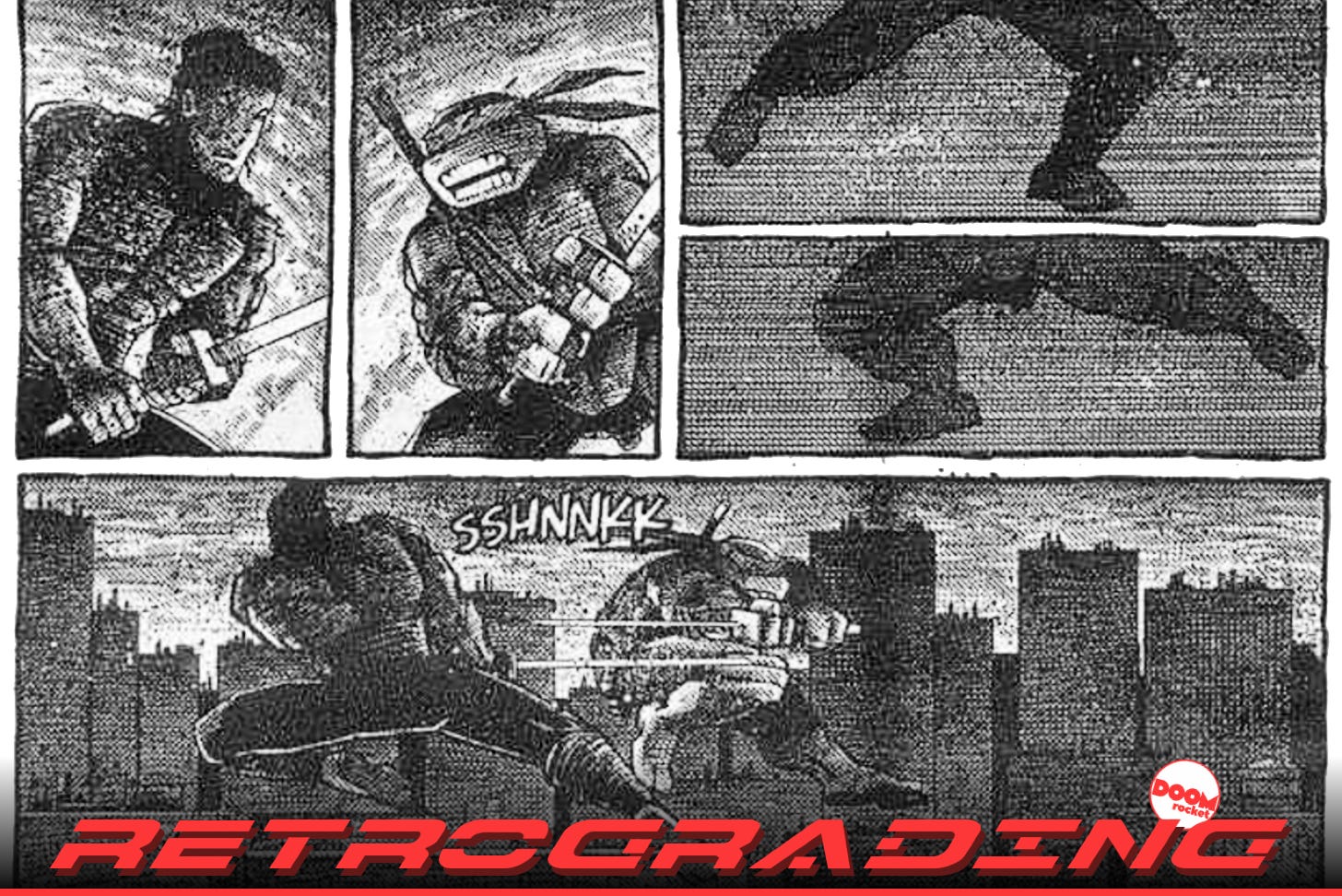
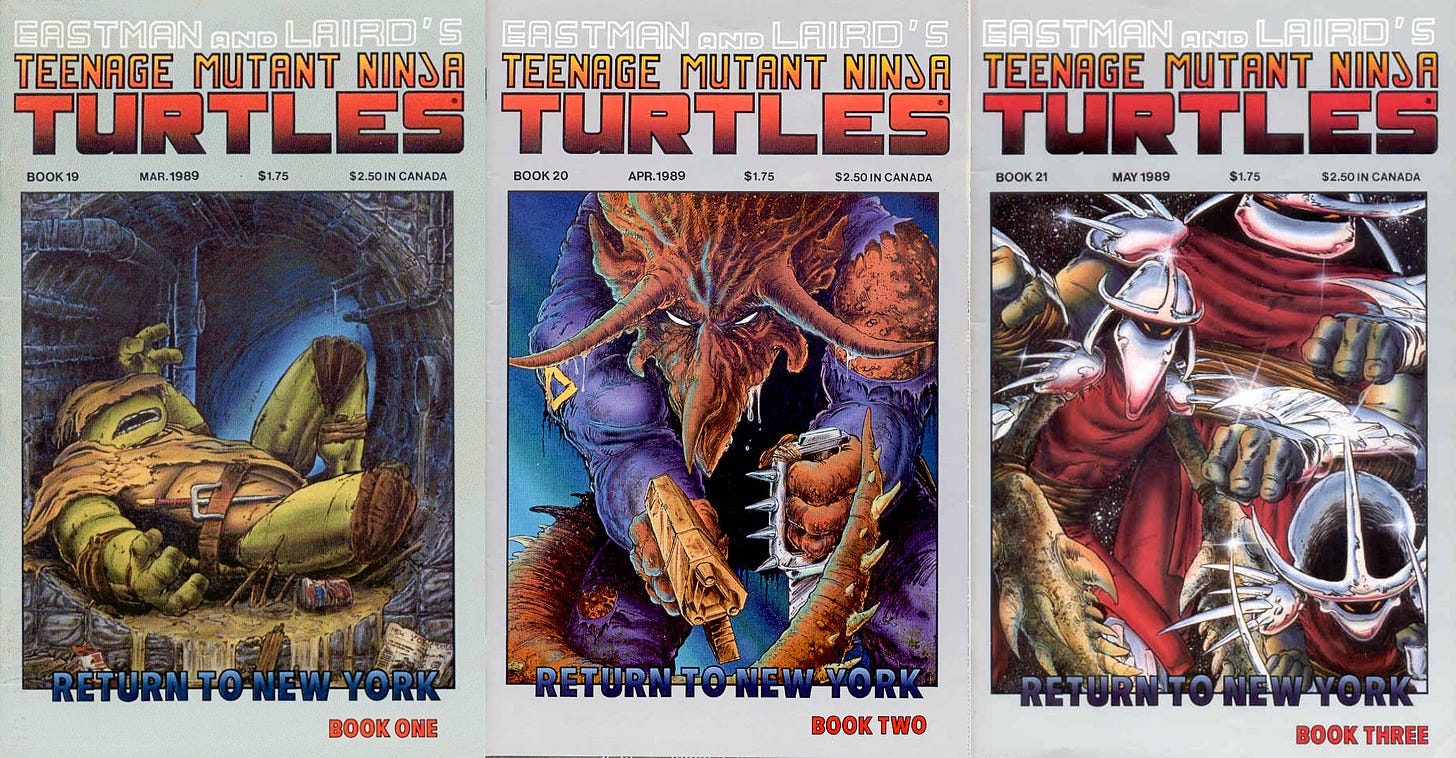
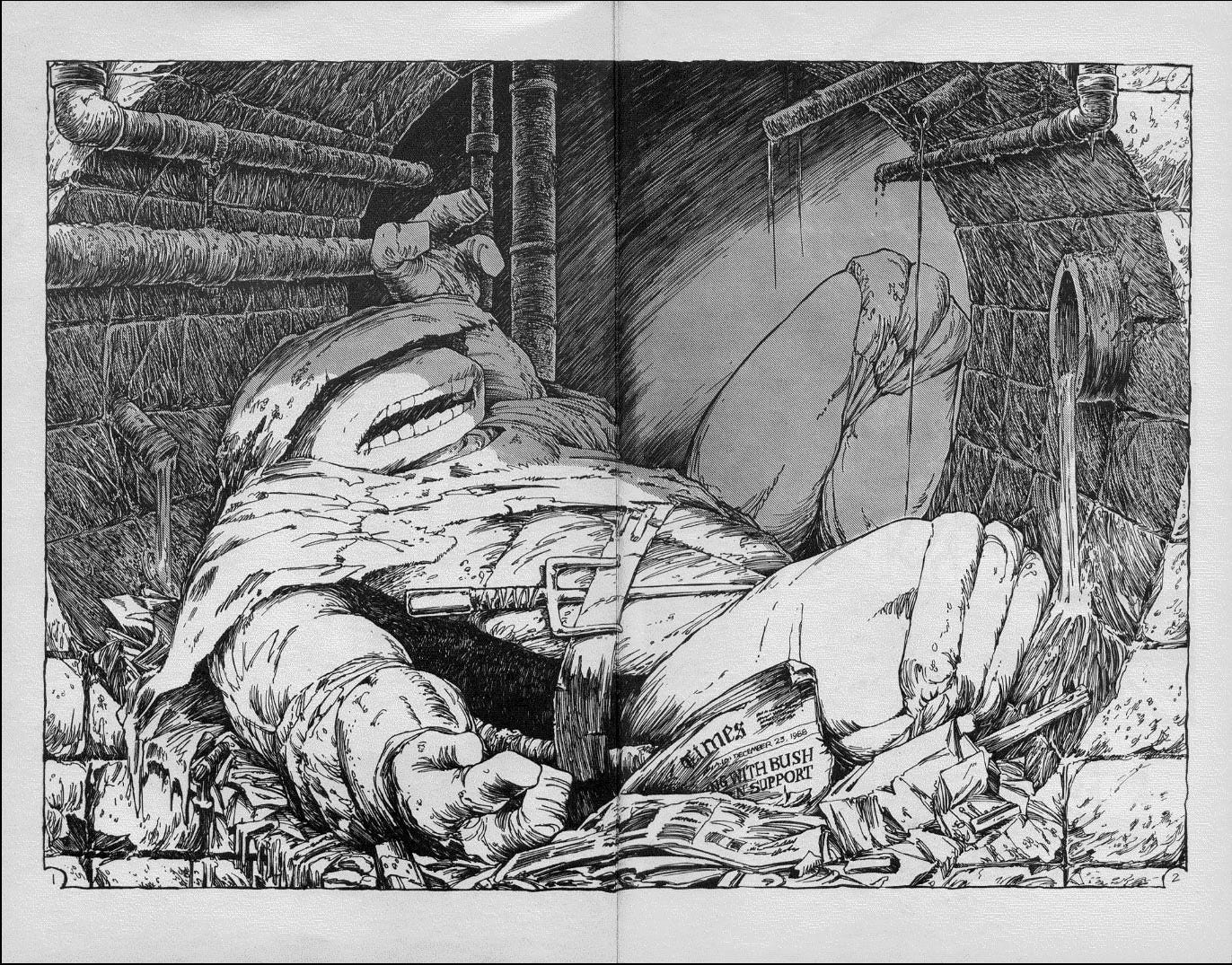
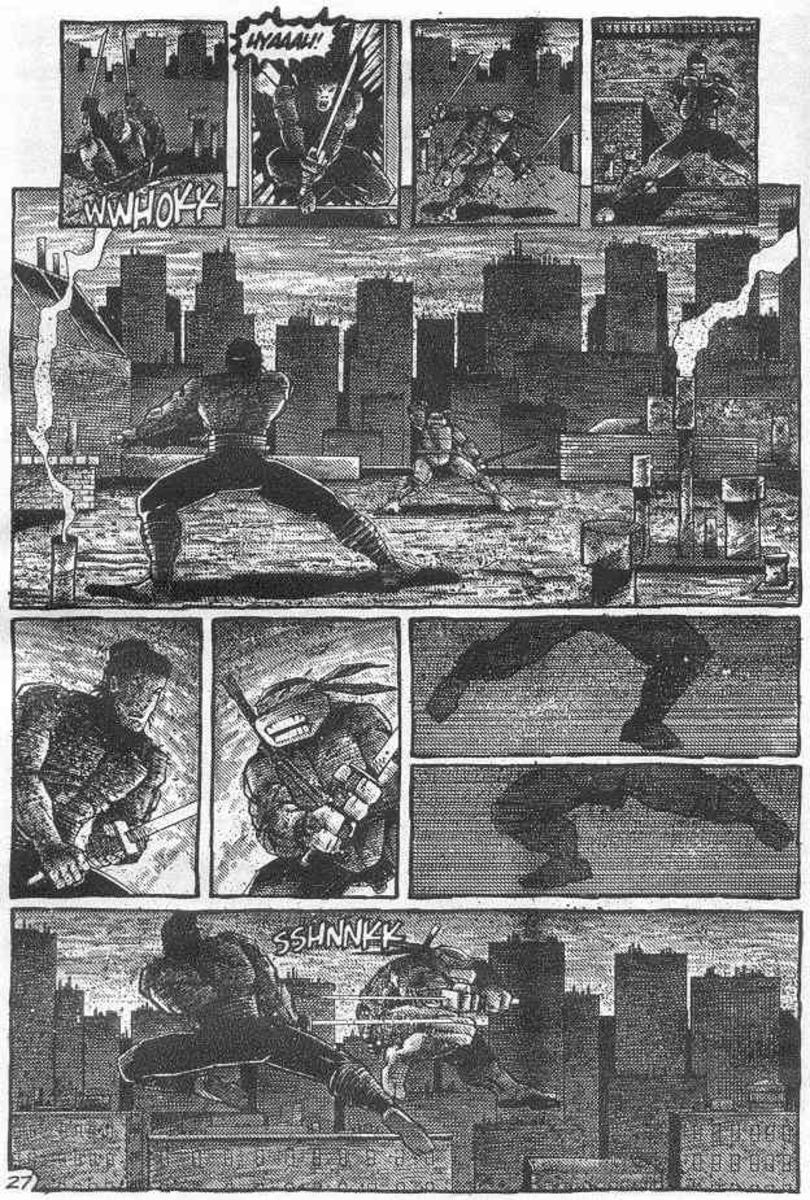
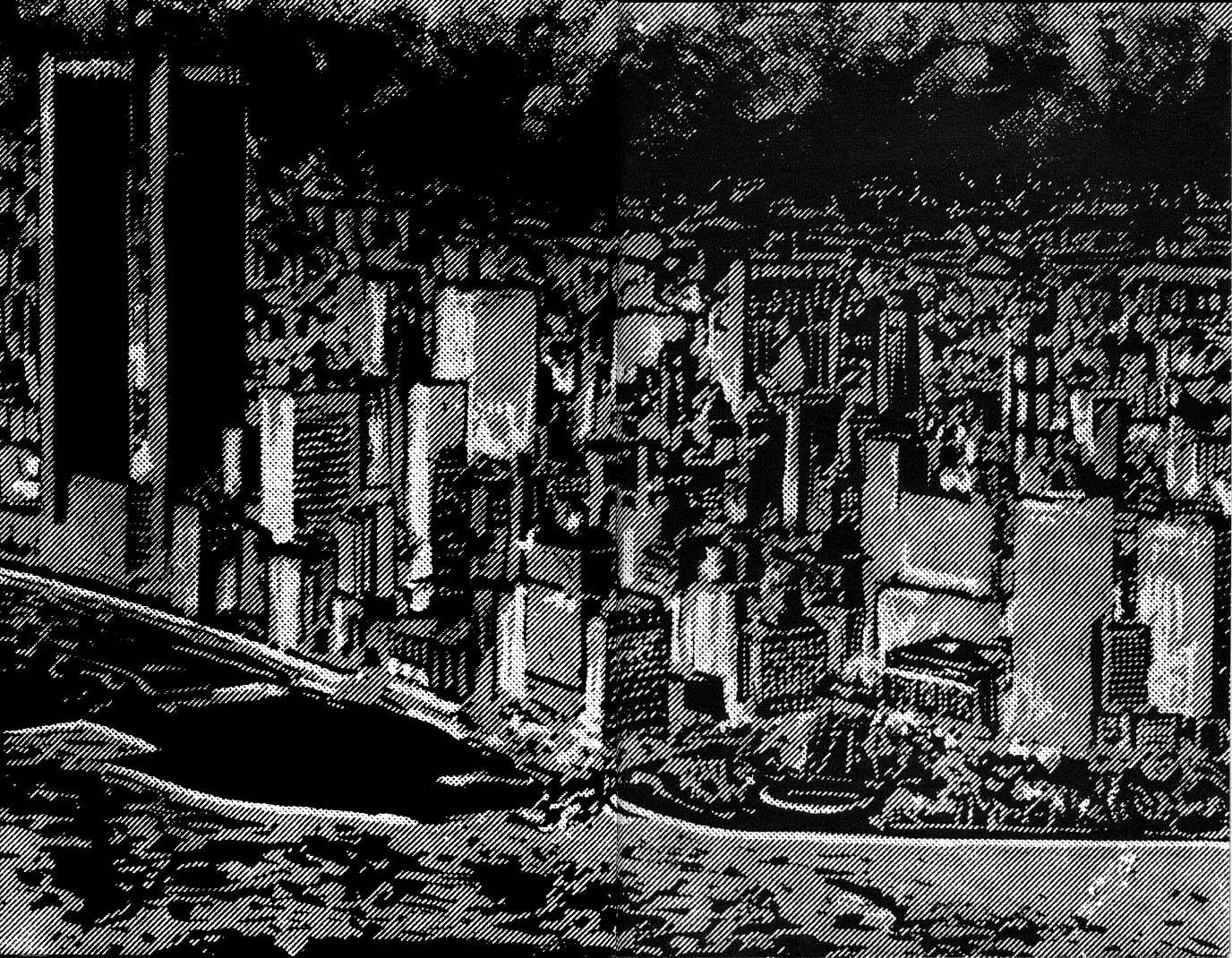

Love this review. I recently read this exact story after receiving the IDW Compendium Vol 2 for Christmas. And this story, wedged there between, as you said "fun to forgettable" stories, was awesome. It served as a good reminder of why I liked the Turtles so much in the first place.
Miller´s influence: Book 2 cover is the same Batman pose from The Dark Knight, I´m sure many will recognize it!
More TMNT related news in my substack, I hope you can check it out!